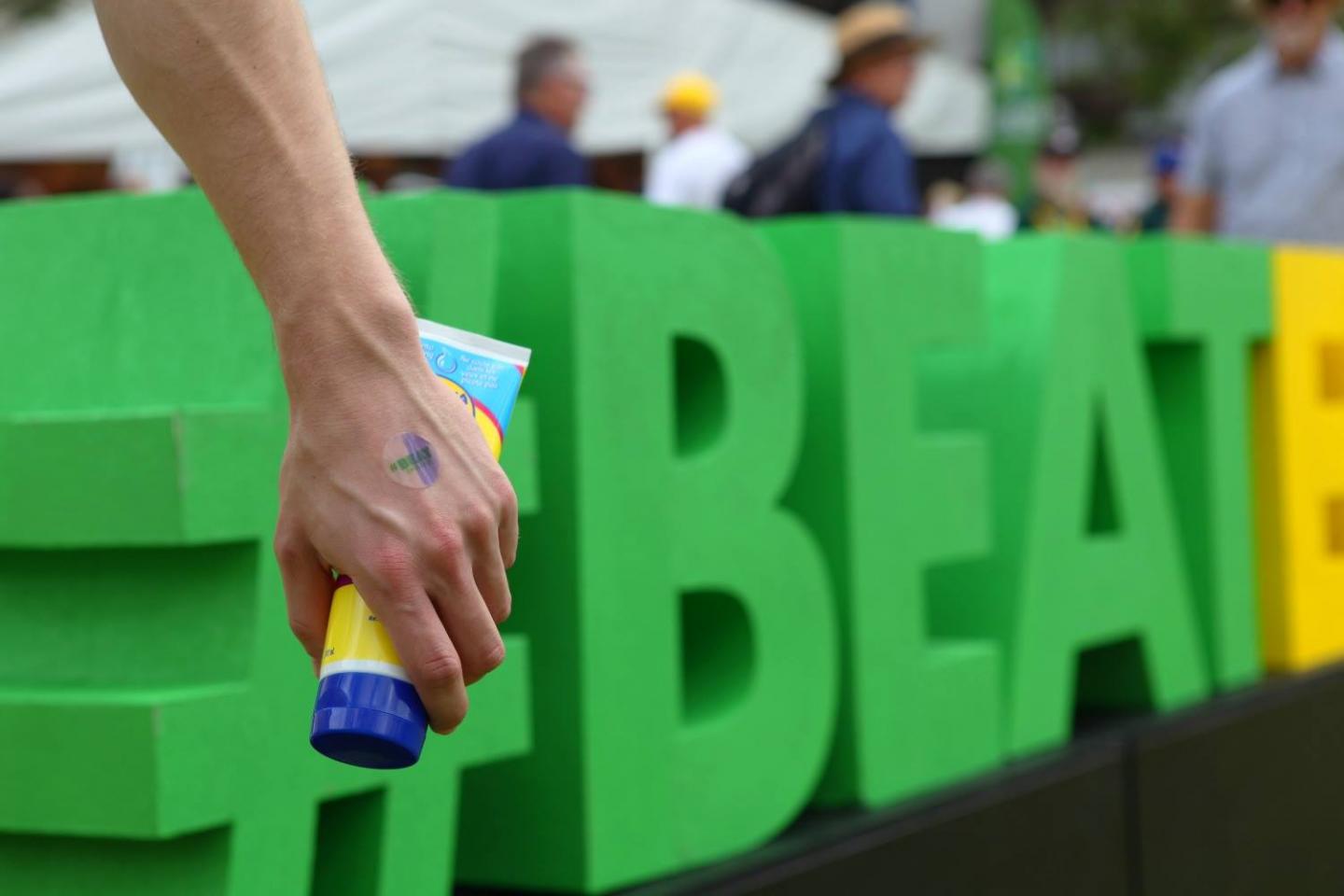UV sticker raises cricket fans’ sunscreen use

Credit: QUT
UV detection stickers trialled by Queensland University of Technology (QUT) researchers at the November 2017 Ashes Test at the Gabba have scored with cricket fans.
The stickers, some of which were tagged with Cricket Australia’s official 2017 campaign hashtag #BeatEngland, contained UV-sensitive ink which changes colour to warn people when the effect of their sunscreen is wearing off and it needs to be reapplied.
Among study participants who received the stickers, 80 per cent were prompted to reapply protective sunscreen and 86 per cent said they’d like to see stickers included with tickets to outdoor events.
- QUT public health researcher Dr Elke Hacker, from the Institute of Health and Biomedical Innovation, led the research
- 428 people who attended different days of the Ashes Test completed the study
- 369 of the participants received UV stickers to wear for one day plus sunscreen, the other 59 were in a control group and were only given sunscreen
Dr Hacker said most of the study participants had very fair or fair skin (63 per cent) and the majority were men (72 per cent).
“Adherence was high among those given the UV detection stickers, with 95 per cent of people using them,” Dr Hacker said.
“And 80 per cent of this group reported that they had reapplied sunscreen during the day. That compares to 68 per cent in the control group who didn’t have the stickers.
“So the results tell us that the stickers are effective reminders to reapply sunscreen throughout the day when people are outside for long periods of time in Queensland, where we have one of world’s highest incidences of melanoma.
“The high rate of use of the stickers indicates this type of technology resonated with people. The stickers are small, simple to use and provide personalised information.”
Dr Hacker said while the stickers were effective as a reminder, 41 of all study participants did report a mild sunburn mostly on their face and neck. Most of these people said they had applied and reapplied their sunscreen.
“This suggests that perhaps people may not have applied enough sunscreen or did not apply it in a way that gave them full protection from sunburn,” she said.
“Previous studies have shown that people sometimes apply only half the recommended thickness to cover the skin.
“This is something to look at in future studies. Perhaps more public information campaigns on sunscreen amount and application technique are needed.”
High school physical education teacher Shaun Griggs, 53, was among the cricket fans who participated in the study.
“I am your typical red hair equals fair skin, and I think anything that makes people more aware of sun safety, especially when you are outside all day, is a great idea,” he said.
“I had prepared for the cricket. I had a hat, sunglasses and sunscreen and had chosen to sit under cover. I had the UV detection sticker on the back of my hand and when it changed colour it reminded me to put on more sunscreen.
“I teach sun safety to my students, so I am keen to share the results of this study with them.”
CEO of Cricket Australia Kevin Roberts said safety is a “key priority” for cricketers at all levels of the game.
“Exposure to the sun for long periods of time is a reality for players and fans,” he said.
“To have partnered with QUT to understand how we can enable better guidance on sunscreen use is an important and innovative public health advancement.”
The study, UV detection stickers can assist people to reapply sunscreen, is published in Preventive Medicine.
The SPOTMYUV stickers used in the trial were a prototype provided by the maker. The stickers are now commercially available.
###
Media Contact
Karen Milliner
[email protected]
Original Source
https:/
Related Journal Article
http://dx.




